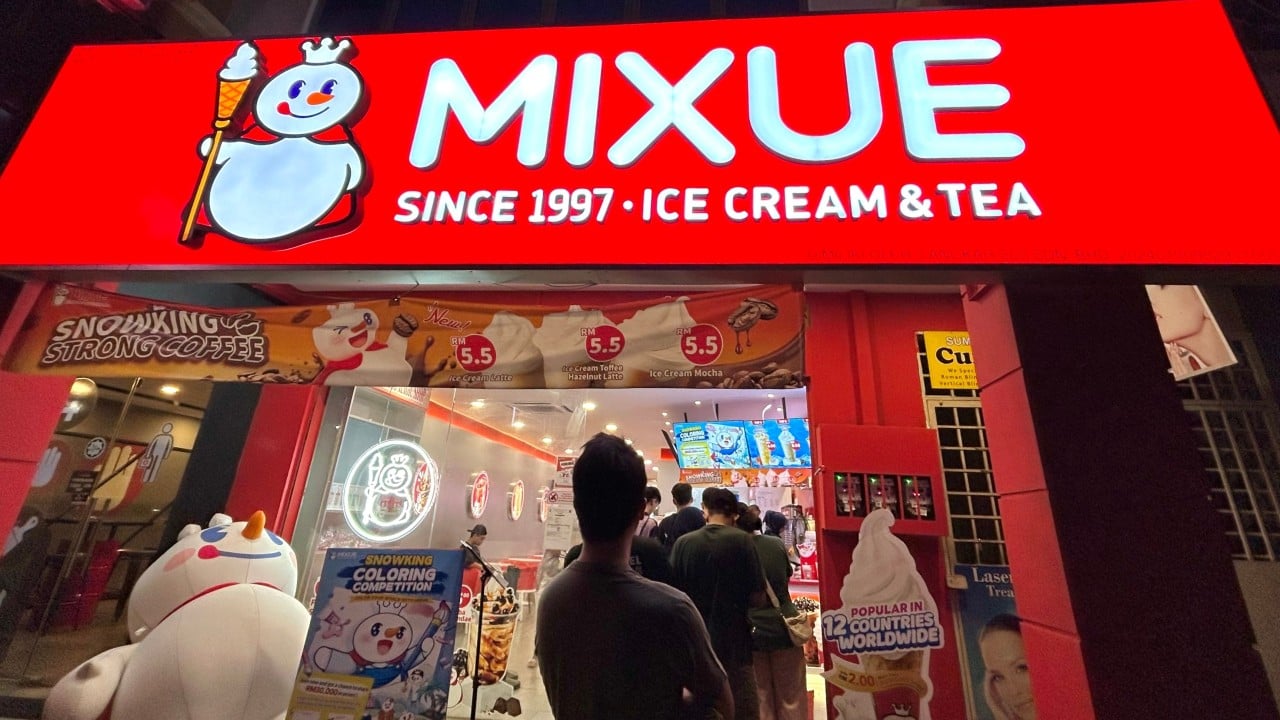Run the numbers, urged Malaysian high school student Nur Ristina Eiliyan. It costs 7 ringgit (US$1.58) to buy an ice cream cone and an iced bubble tea at Chinese franchise Mixue – or spend more than 10 units of the Malaysian currency anywhere else.
Advertisement
Her classmate, Alia Kaizara, did the maths and agreed. She joined Eiliyan for the first time this month at the brightly lit restaurant on a suburban side street near the Southeast Asian country’s capital, Kuala Lumpur.
“It’s good and it’s cheaper,” Kaizara said, working on her tea as Eiliyan raced to stop a tower of ice cream from dripping down her cone under the watch of Mixue’s brightly lit icon – a coronated smiling snowman.
Neither of the 15-year-old students knew Mixue was a Chinese brand, though they had noticed outlets spreading around the greater Kuala Lumpur area – Google Maps lists a total of 20. Mixue launched nearly three decades ago in the inland Chinese city of Zhengzhou. Today, Mixue is reportedly the world’s largest food and beverage chain by store count.
Chinese brands are still relatively new in the country where Western and Southeast Asian retailers are well entrenched, from Kuala Lumpur’s giant shopping malls to the departure areas of far-flung airports.
Advertisement
But consumers in the upper-middle-income Southeast Asian country are discovering Chinese retail brands that have quietly entered the market over the past decade because the prices are lower than those charged by foreign competitors with no hit to quality.

